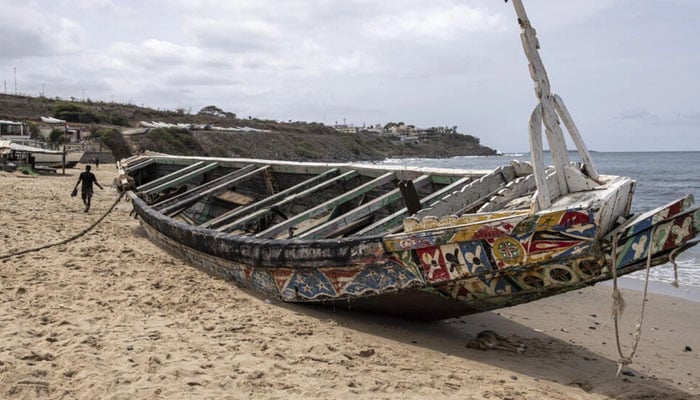More than 60 migrants have possibly lost their lives after a boat carrying them was found capsized at Cape Verde peninsula of Senegal in the West African region, as per the official notice.
Thirty-eight people, including children, were rescued, , adding that footage showed survivors being helped ashore — some on stretchers — on the island of Sal.
It is believed that almost everyone on the boat — which spent more than a month at sea — was from Senegal. To help stop additional migrant deaths, Cape Verde officials have called for worldwide action.
The vessel was first spotted on Monday, citing police officials. While initial reports suggested the boat had sunk, it was later clarified that it had been found drifting.
A Spanish fishing boat spotted the wooden pirogue-style boat capsized some 320 kilometers (200 miles) off Sal, and immediately contacted the authorities, the police added.
An International Organisation for Migration (IOM) official also confirmed that four children — between the ages of 12 and 16 — are among the survivors.
According to survivors, the boat departed the Senegalese fishing community of Fasse Boye on July 10 with 101 people on board, Senegal’s foreign ministry said Tuesday.
Nearly all those on the boat had grown up in the community and some local families were still awaiting news on whether their relatives were among the survivors, Moda Samb, an elected official in the village, told the
The ministry declared that it was coordinating with Cape Verdean authorities to set up the repatriation of Senegalese people.
As per reports, passengers also hail from Sierra Leone and Guinea-Bissau.
The survivors’ conditions were improving and they were being looked after, with a focus on rehydration and tests for conditions like malaria, Jose Moreira, a health official on Sal, added.
Moreover, Health Minister Filomena Goncalves said: “We know that migration issues are global issues, which require international cooperation, a lot of discussions, and global strategy.
“We all — all the nations — have to sit down at the table and see what we can do so that we don’t lose any more lives at sea, above all.”
IOM spokeswoman Safa Msehli said safe pathways for migration were “sorely lacking” and that their absence gave “room to smugglers and traffickers to put people on these deadly journeys”,
It must be noted that while the survivors wound up in Cape Verde, it wasn’t their original destination.
The archipelago is 600 kilometers (370 miles) off the coast of West Africa and is a major migratory route to the Canary Islands, a Spanish enclave that many people view as a gateway to the EU.
It is also one of the riskiest voyages a migrant can take, according to the IOM.
While exact numbers are difficult to ascertain in cases of irregular migration, at least 67,000 migrants arrived in the Canary Islands between 2020 and 2023.
And just over 2,500 people have died during that time. The total includes all registered deaths, according to the IOM. Given the route’s erratic and covert nature.
Despite the perilous route and the subsequent issues, people continue to risk their lives and families to get into Europe. Why?
Poverty is frequently considered to be a significant issue. Many people view migration to Europe as a way to a better life and to send money back home to help their families.
But there are also other elements at work. A large portion of West Africa is becoming more unstable, and terror insurgencies and coups are making an already difficult situation much worse.
Ultimately, there are just as many motivations to relocate as there are migrants. Each person has a unique journey and background. It seems at least 60 of those came to a traumatic end in the Atlantic Ocean.



Comments are closed.